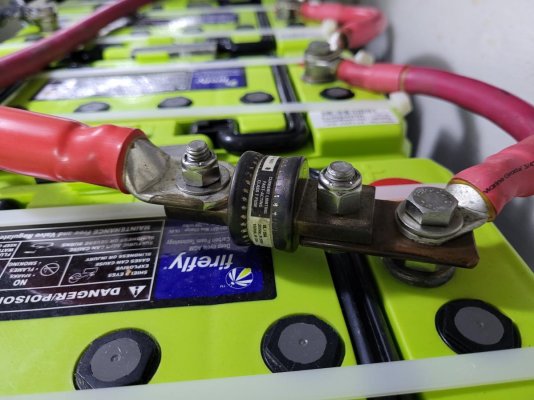JDCAVE
Guru
- Joined
- Apr 3, 2011
- Messages
- 2,911
- Location
- Canada
- Vessel Name
- Phoenix Hunter
- Vessel Make
- Kadey Krogen 42 (1985)
The overcurrent protection on the house bank cable is located at the terminus in the electrical locker in the engine room. I want to rethink this and move it much closer to the battery bank.
I have two battery boxes with 4 T-105’s each with 2/0 cable. My intent is to have 2 short lengths of cable (~18”) from the the battery boxes to a Class-T Fuse Block. I realize this is 18” instead of ABYC 7” but, I think this is the best I can do and I don’t think mounting a fuse on a stud on the “last battery” will work in this instance.
I have been using the Blue Seas circuit wizard to do the calculation for the size of fuse and cannot get it to work. It asks for cold cranking amps and it’s not specified in the T-105 spec sheet. I think that’s where it’s tripping up.
I’m thinking of landing at 250 amp fuse, Class-T.
Thoughts?
Jim
I have two battery boxes with 4 T-105’s each with 2/0 cable. My intent is to have 2 short lengths of cable (~18”) from the the battery boxes to a Class-T Fuse Block. I realize this is 18” instead of ABYC 7” but, I think this is the best I can do and I don’t think mounting a fuse on a stud on the “last battery” will work in this instance.
I have been using the Blue Seas circuit wizard to do the calculation for the size of fuse and cannot get it to work. It asks for cold cranking amps and it’s not specified in the T-105 spec sheet. I think that’s where it’s tripping up.
I’m thinking of landing at 250 amp fuse, Class-T.
Thoughts?
Jim
Last edited:

